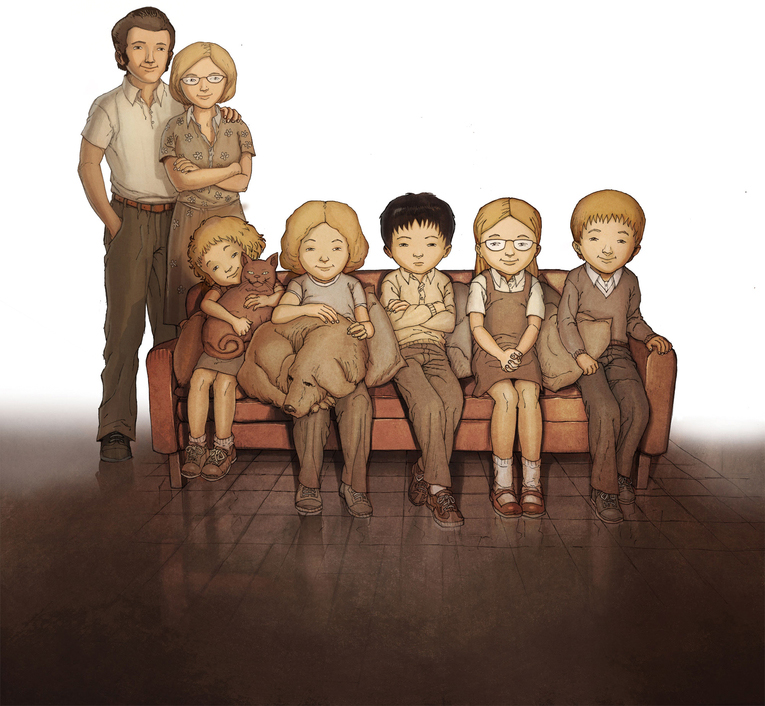17th Animation Division Grand Prize
Approved For Adoption
Animated memoir film
JUNG / Laurent BOILEAU [Belgium / France]
Outline
Following the Korean War, many Korean children left their homeland as adopted children. As one such individual, JUNG was welcomed to a family in Belgium as “family”. Living with parents and four siblings with a skin color different from his own, JUNG learned French, forgot Korean, and was able to forget the life he had led in the orphanage. It was then that a Korean foster girl came to join the “family”. Upon seeing her, JUNG began for the first time to become aware of who he was… Based on a comic depicting the first half of his own life, Korean-born Belgian director JUNG co-directed this animated memoir film together with documentary film director Laurent Boileau. Using film footage of modern-day Seoul, 8mm film and video recordings showing JUNG at the time in the 1970s, and diverse techniques such as 3D animation combining hand-drawn images and CG, it opens up the expressive possibilities of the animated medium. It tells of a “family” filled with love despite differences in skin color and differing blood ties.
Reason for Award
Approved for Adoption is far from being just another story about going “in search of myself ”. Japan benefitted economically from the Korean War, though it is little known that war orphans were born in Korea, and many of them were then sent to foster parents in Europe and America. The film portrays the protagonist (and artist) and his yearnings for his home country (and biological mother), as well as his anguish about being alien in his European family. The work is restrained in how it expresses both the adversities created by the war and the Confucian influences of his homeland, as well as the reactions to his genuine at tempts to help others. The use of the honeylike color to neutralize JUNG’s own ashen experiences is superb, while the film deftly relates the narrative through weaving real footage of the period with animation of the emotions and memories of the artist. (OHI Fumio)



